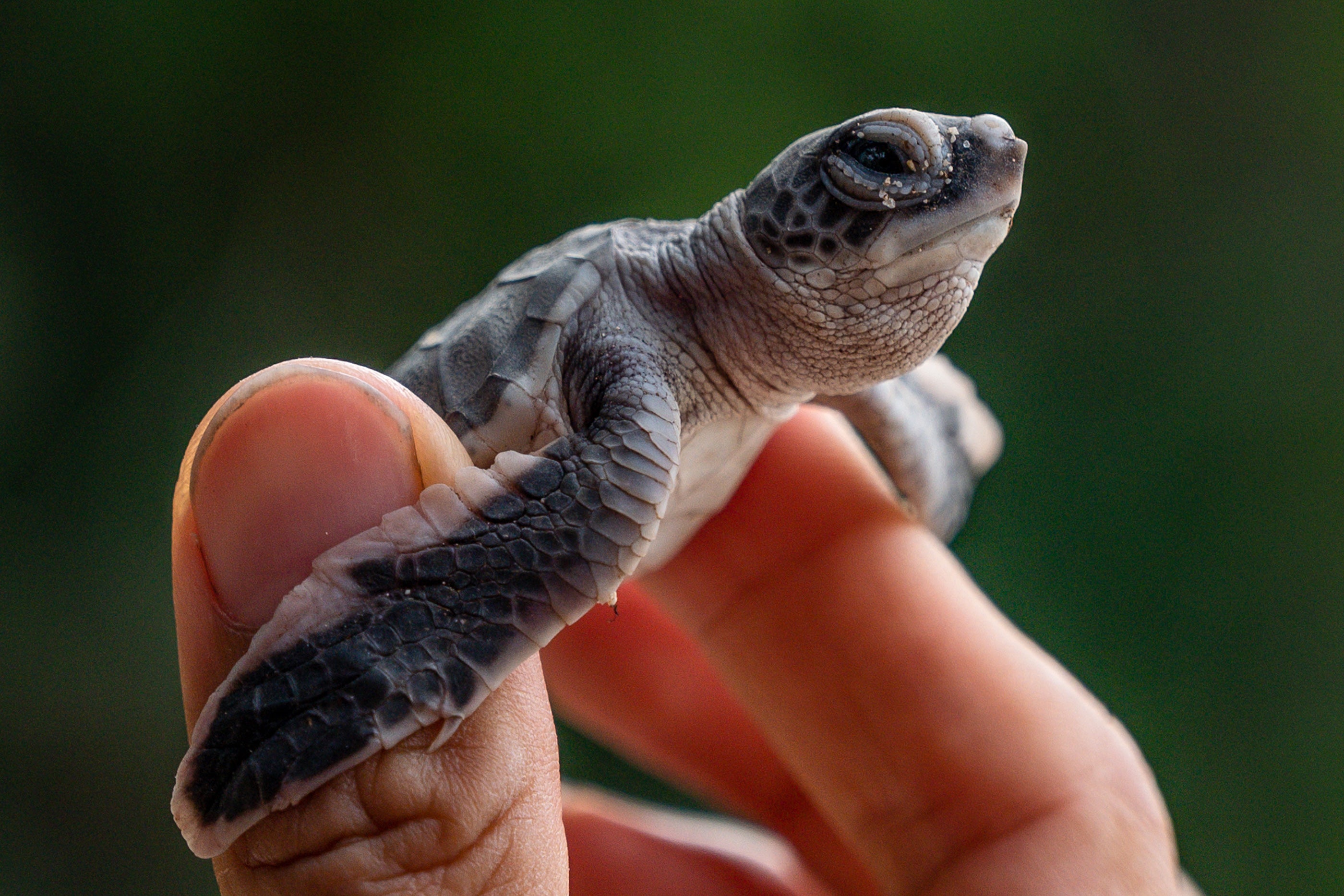Plastic creates ‘evolutionary trap’ for sea turtles, study suggests
‘Hatchlings generally contained fragments up to about 5mm to 10mm in length, and particle sizes went up along with the size of the turtles’

Plastic pollution creates an “evolutionary trap” for young sea turtles, according to a new study.
The research found plastic inside small juvenile turtles along both the east (Pacific) and west (Indian Ocean) coasts of Australia.
After hatching on beaches, the animals travel on currents and spend their early years in the open ocean.
However, these currents accumulate vast quantities of plastic and because they feed near the surface, many young turtles swallow it.
The research team led by the University of Exeter, included Murdoch University, the Department of Environment and Science (Queensland) and the Department of Biodiversity Conservation and Attractions (Western Australia).
Dr Emily Duncan, of the Centre for Ecology and Conservation on Exeter’s Penryn Campus in Cornwall, said: “Juvenile turtles have evolved to develop in the open ocean, where predators are relatively scarce.
“However, our results suggest that this evolved behaviour now leads them into a trap - bringing them into highly polluted areas such as the Great Pacific Garbage Patch.
“Juvenile sea turtles generally have no specialised diet - they eat anything, and our study suggests this includes plastic.
“We don’t yet know what impact ingesting plastic has on juvenile turtles, but any losses at these early stages of life could have a significant impact on population levels.”
Researchers examined juvenile sea turtles - from hatchlings to a shell measurement of up to 50cm - that either washed up or were accidentally caught by fishers on the Australian coasts.
The study included a total of 121 sea turtles from five of the world’s seven species: green, loggerhead, hawksbill, olive ridley and flatback.
According to the data, the proportion of turtles containing plastic was far higher on the Pacific coast with 86 per cent of loggerheads, 83 per cent of greens, 80 per cent of flatbacks and 29 per cent of olive ridleys.
On the Indian Ocean coast, 28 per cent of flatbacks, 21 per cent of loggerheads and 9 per cent of green turtles contained plastic.
While no plastic was found in hawksbill turtles on either coast, only seven hawksbills were found so this sample size was small.
The researchers found that plastic in the Pacific turtles was mostly hard fragments, which could come from a vast range of products used by humans, while Indian Ocean plastics were mostly fibres - possibly from fishing ropes or nets.
The polymers most commonly ingested by turtles in both oceans were polyethylene and polypropylene.
Dr Duncan said: “These polymers are so widely used in plastic products that it’s impossible to pin down the likely sources of the fragments we found.
“Hatchlings generally contained fragments up to about 5mm to 10mm in length, and particle sizes went up along with the size of the turtles.
“The next stage of our research is to find out if and how plastic ingestion affects the health and survival of these turtles.
“This will require close collaboration with researchers and veterinarians around the world.”
The study was funded by the Sea Life Trust and the National Geographic Society and published in the journal Frontiers in Marine Science.
PA
Subscribe to Independent Premium to bookmark this article
Want to bookmark your favourite articles and stories to read or reference later? Start your Independent Premium subscription today.

Join our commenting forum
Join thought-provoking conversations, follow other Independent readers and see their replies